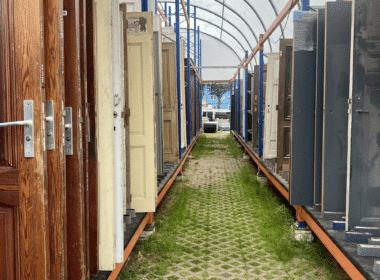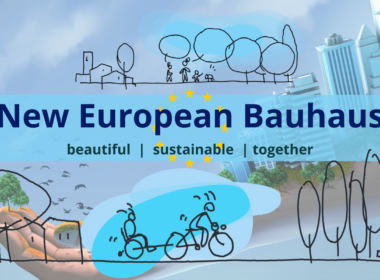On the one hand, the increasing artificialisation (and impermeabilisation) of soils and leaks in networks and buildings. On the other hand, renovation/rehabilitation work and tools to help decision-makers and users. The people involved in water management in the Brussels-Capital Region must take these different elements into account to ensure responsible and effective water management.
The Brussels-Capital Region has developed a Water Management Plan since 2009. It is revised every six years. According to François Mayer, Project Manager for the Water Department Coordination Service at Bruxelles Environnement: “The challenges include those related to pressure from urbanisation, which modifies all natural water cycles. The first consequence of this is the artificialisation of soils, which results in less infiltration and more run-off, an increased risk of flooding, increased water pollution, the modification of underground run-offs, the non-resupply of groundwater and, potentially, the drying up and disappearance of waterways”.
Olivier Broers, Director of Studies and Investments at Vivaqua, shares this opinion: “Each year, Vivaqua renovates approximately 1.1% of the distribution networks, which amounts to €15 million in works, and invests about €60 million more in networks, notably to address problem areas related to urban flooding resulting from very extensive impermeabilisation. Whenever possible, we try to reverse the impermeabilisation of certain areas and support land developers to ensure that water management is well thought out at the lot level. The impermeabilisation has sometimes tripled or quadrupled over the past 50 years in some Brussels municipalities. This is the most decisive factor for urban flooding. The Water Platform, which brings together the people involved in water management in Brussels, enables exchanges and the development of joint studies and projects to gradually gain control of impermeabilisation.”
Water leaks, another concern
Water management companies maintain and repair the networks, but not enough is said about water wastage in buildings. According to Alexandre McCormack, a structural engineer and Chief Executive Officer of Shayp, 20% of the water “consumption” in buildings is due to leaks. And one building out of three experiences leaks every year. Shayp commends regional initiatives like Plan PLAGE and hopes that tracking water consumption will be among the 2022 objectives. When there is a shortage of drinking water, the first response is to ask people to reduce their consumption. However, according to Alexandre McCormack, “you have to both reduce demand for water in buildings and eliminate wastage if you want to ensure effective water management and make society more resilient and sustainable when confronted with shortages, notably those linked to soil impermeabilisation. As leaks impact water bills, it’s financially and ecologically valuable to decrease waste”. That’s why the Société wallonne des eaux called on Shayp to develop the easyCONSO service, which enables public authorities and property players to identify water waste in their buildings and propose solutions to reduce water losses. An example to follow in Brussels and elsewhere.
Solutions to fight against the effects of climate change
According to François Mayer, integrated rainwater management provides an interesting approach: “The water is no longer sent to the sewers and is considered to be a resource and no longer waste. It must be valued and used as a medium for all sorts of services for the benefit of nature and to fight urban heat islands…” And, underground, the development of “Riothermie”, which consists in using the heat and cool air of the sewers to heat and cool buildings. Vivaqua initiated an R&D project in this field integrating heat exchangers when working on sewer rehabilitation in order to provide calories and frigories to both existing buildings and buildings under construction nearby. “However, there was no guarantee that there would be a customer in the area who would be interested exactly when the rehabilitation was underway”, acknowledges Olivier Broers. “Therefore, the price of the exchangers could not be more than that of a “traditional” rehabilitation. We filed the patent for an exchanger made from PEHD, which is an inexpensive material and which can be installed in large quantities, to ensure an effective result. The project developed in several stages: traditional exchanger in the box culverts of the Senne River for the showers in a Vivaqua building (2007), a PEHD exchanger in a sewer in Molenbeek to heat the utility room of a storm basin under construction (2014), test and measurement phases by VUB-ULB, and, in 2021, installation of exchangers which will cover more or less 25% of the needs in frigories and calories of 15,000 m² of the municipality of Uccle’s administrative buildings.
Online solutions
Among the tools and training provided to professionals to enable them to better manage water for their projects, the mapping and pre-sizing tools from Bruxelles-Environnement are very useful. The first are informational maps covering a number of existing aspects of Brussels, to be taken into account when developing a project. BruWater, the latest tool, shows the quality of waterways and of the bodies of underground water and shows the changes in the quality of bodies of water over the years. The second group includes Ogep, which is used to size rainwater management structures at the lot level and Quadeau, which expands the scope to the neighbourhood. François Mayer: “These project tools are incentivised and recommended, especially for complex projects. However, they aren’t mandatory. There are others, sometimes more recent, which we also recommend, including Parapluie-hydro from the city of Lyon and the Sirio tool, developed in Flanders”. Others include the online calculator used to prepare environmental permits, the Guide Bâtiment Durable, the water facilitator and the BruGeoTool, which provides standard cross-sections of the subsoil, including the groundwater, in 3D.
In Brussels, public and private project leaders don’t lack in tools when studying water management for their projects.
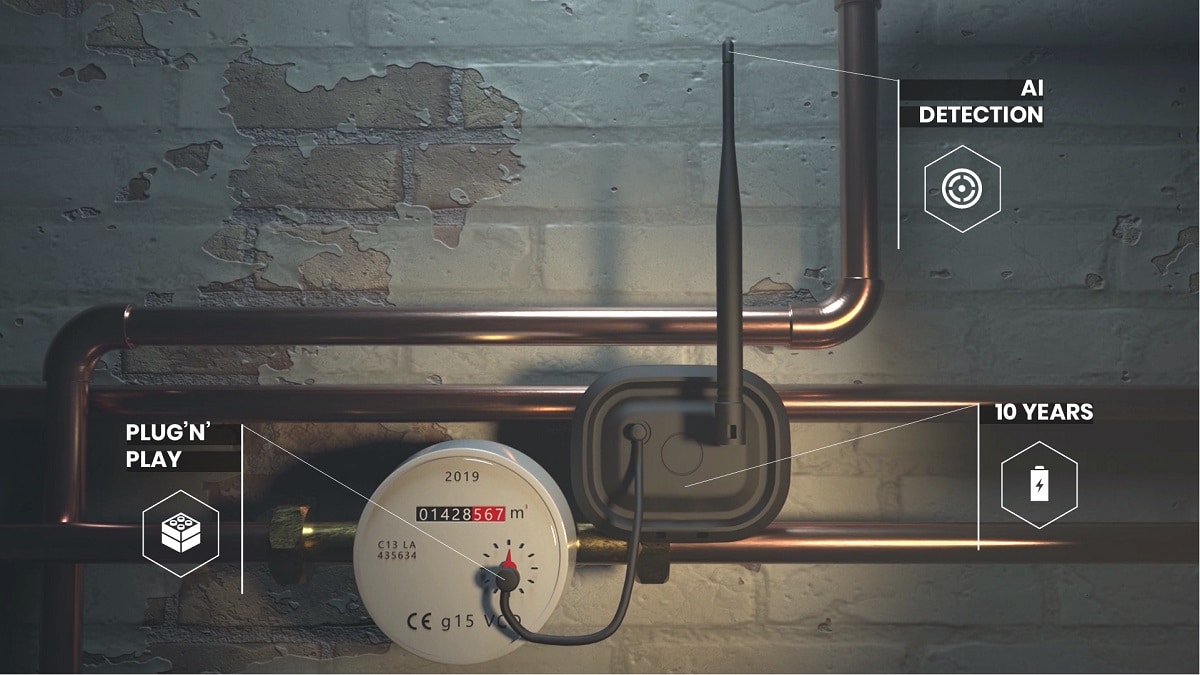
The system installed by Shayp detects water leaks, which account for about 20% of water “consumption” in the Brussels-Capital Region.
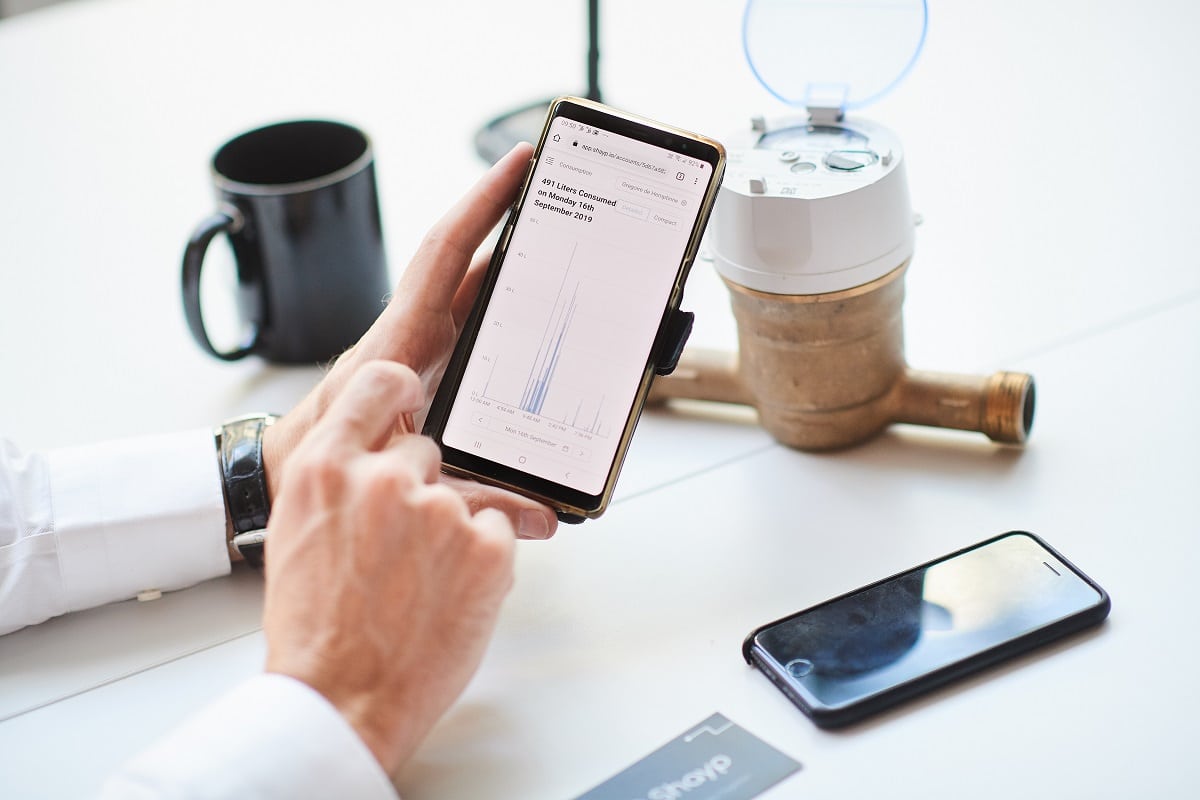
Water consumption can be tracked in real time via a dedicated application.
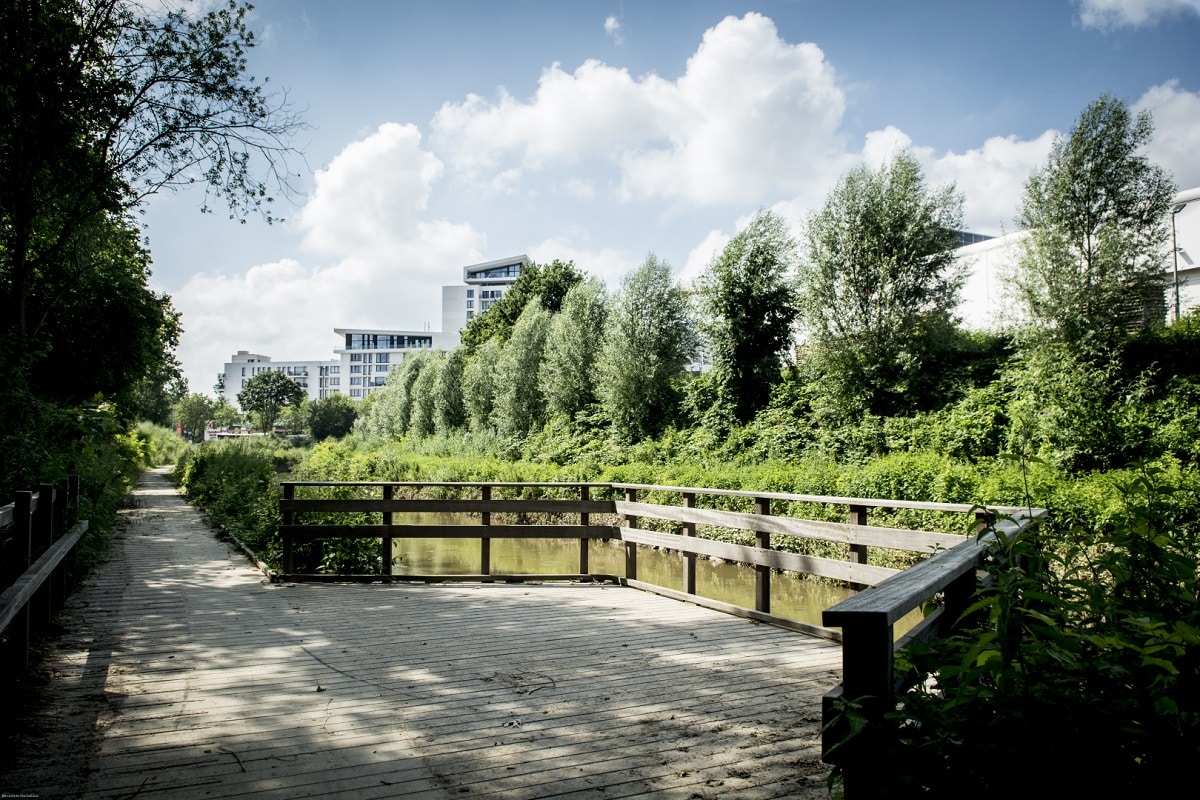
Redevelopment by Bruxelles Environnement of the banks of the Senne River and creation of a cycling and pedestrian path on Boulevard Paepsem (Anderlecht) © Bénédicte Maindiaux
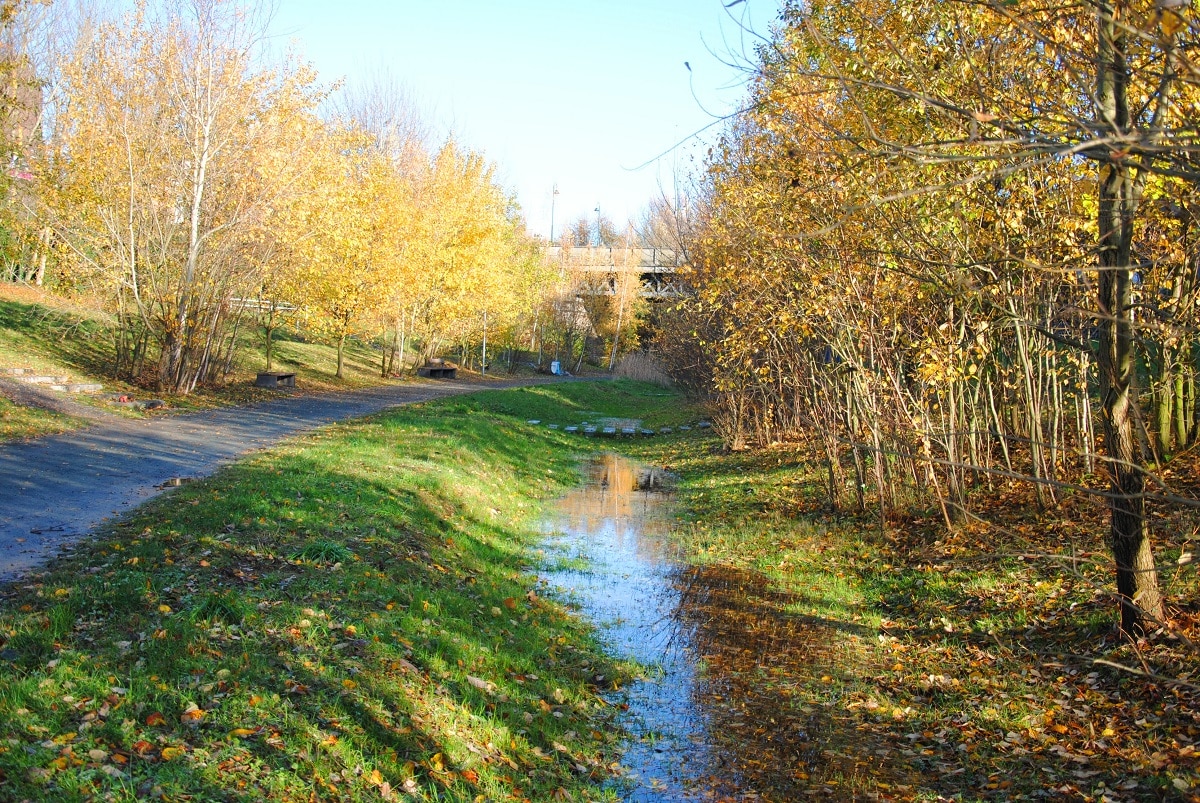
Installation by Bruxelles Environnement of integrated rainwater management structures (swales) in the Tour et Taxis Park.
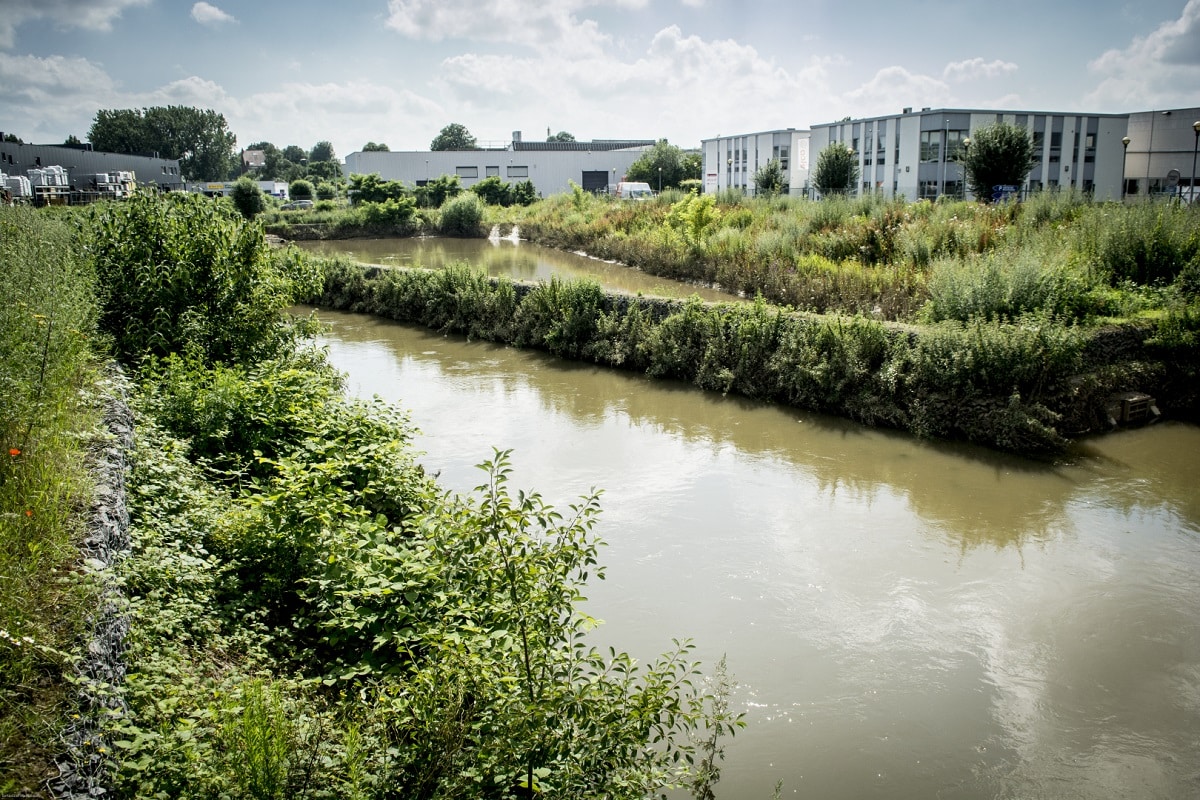
Creation by Bruxelles Environnement of a temporary immersion area in Anderlecht © Bénédicte Maindiaux

“Riothermie” installation in Uccle.


